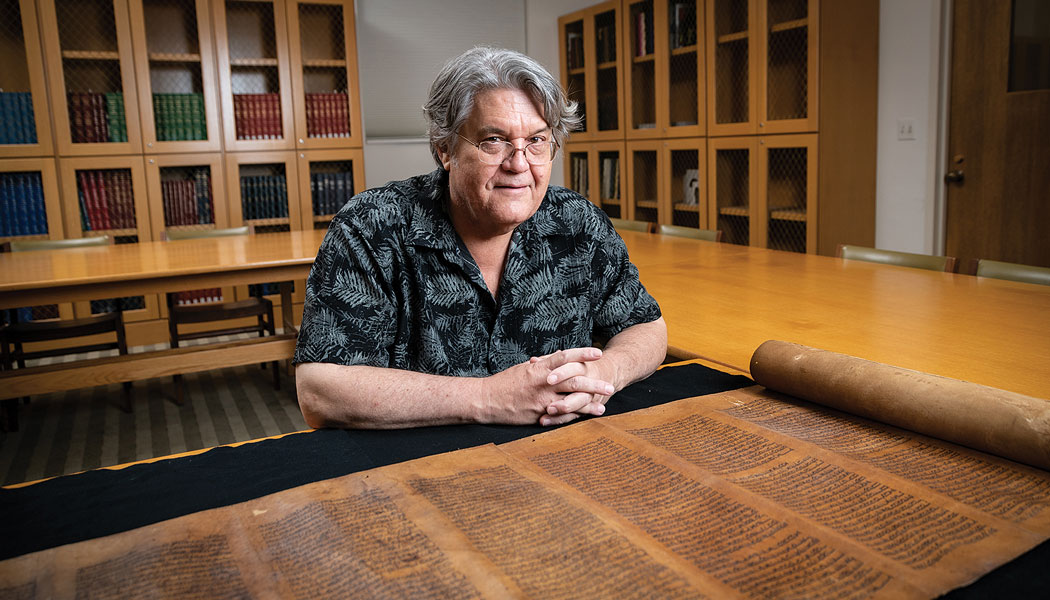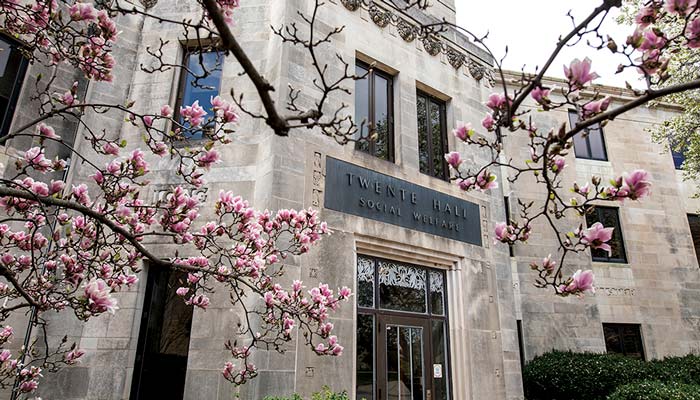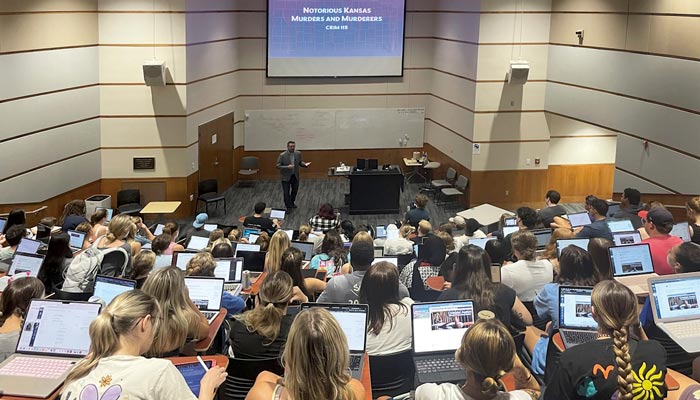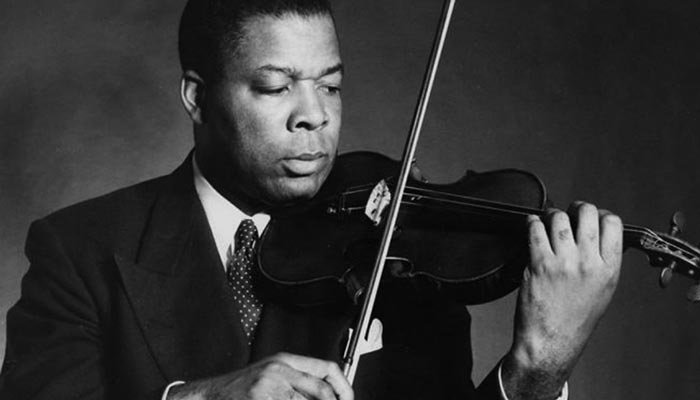Torah scroll’s secrets
KU professor researches origin of ancient Torah scroll

Paul Mirecki loves a good mystery—especially one that involves old books. So when staff at the Kenneth Spencer Research Library approached him in 2014 about an old, damaged Torah scroll in the museum’s rare books collection, Mirecki was instantly intrigued.
The associate professor of religious studies, who specializes in ancient Mediterranean culture and manuscripts, began researching the sacred Hebrew text and immediately discovered that it was actually only half a scroll. “When you get to the end of this scroll, you’re at Leviticus 8:24a, the first half of verse 24 of Leviticus 8,” Mirecki explains. “The rest of the scroll is missing.”
Determined to locate the scroll’s missing half, Mirecki contacted the National Library of Israel in Jerusalem, which maintains a database of known scrolls throughout the world, including where they reside and what condition they’re in. His request was forwarded to an Israeli scholar, Ephraim Caspi, with whom Mirecki shared photographs and details of KU’s scroll, hoping to identify its lost portion. Three years later, they got an answer: The missing half, which began at Leviticus 8:24b, was in Château de Chantilly, a historic estate and museum just north of Paris.
During spring break this year, Mirecki visited the Château, where he learned that the intact Torah scroll had been safely housed in a synagogue in Medea, Algeria, in the early 19th century, before the French invasion in 1830. It was removed and crudely torn in half a decade later, in 1840, when the synagogue was ransacked during a pogrom against the Jewish community.
“It’s really a tragedy that it was taken out of the synagogue,” Mirecki says. “But the synagogue had been abandoned, the town had been largely abandoned during the invasion, and the Jewish community was taken under the protection of a Muslim general.”
Evidence collected and filed with the half-scroll in Paris confirms that it was acquired in 1840 by Henri d’Orléans, the wealthy Duke of Aumale, who brought it to the Château from Medea, where it sat unstudied for 180 years.
The other half of the scroll, which resides in the Spencer Research Library, was purchased by KU alumna Alpha Owens, c’1901, g’1903, a world traveler and professor of modern languages at Morris Harvey University in Charleston, West Virginia. One of her hobbies, according to an interview conducted in 1952, was collecting manuscripts and other valuable material for use in modern language teaching. Mirecki believes that Owens likely purchased the scroll at a market or bookstore in France in the early 1900s. It was donated to the University in 1969, four years after she died.
For the past five years, Mirecki has painstakingly studied the KU scroll, which sustained extensive damage from tears, spills and insect larvae since it left the Algerian synagogue in 1840. “You can see it was not treated very well, which says something about its history,” says Mirecki, who has specialized in this kind of research for more than 30 years. “It has gone through a lot.”
Mirecki also has successfully identified the scribe’s handwriting style, which was first seen in Spain in the early 1220s. In the coming months, he plans to use a technique called carbon-14 dating to more accurately pinpoint the age of the document, though he estimates it was created in 1750 or earlier. He hopes to publish his findings.
“It’s an interesting story,” Mirecki says, noting there are still many unanswered questions about the scroll. “It’s kind of like an Agatha Christie mystery. The history of the object is almost more interesting than what’s written on it.”








